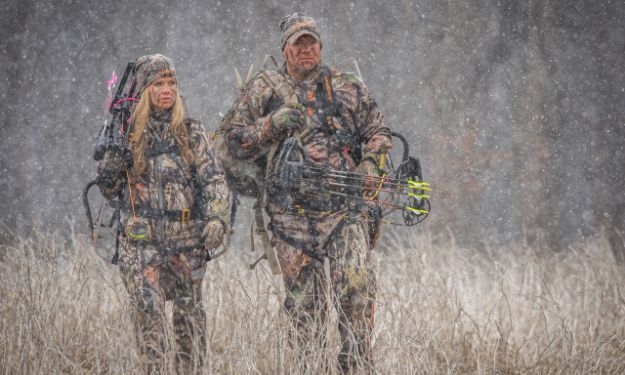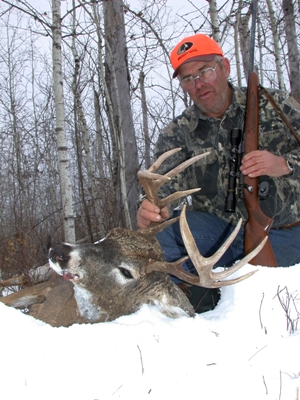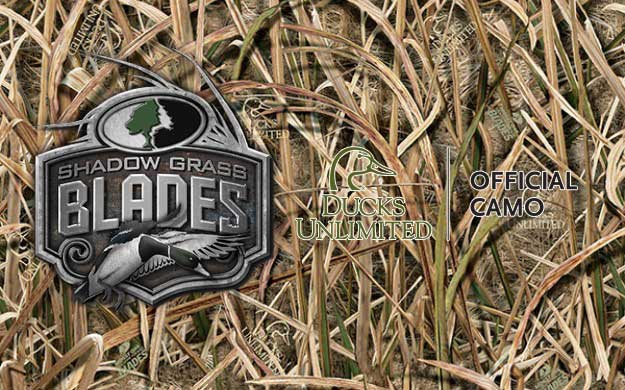
Most often if you’re hunting in the afternoon in the late deer season, the does and the fawns will come into the field first. Then the smaller bucks will appear. Finally the big bucks you’re interested in taking will show up. To get a shot at a buck during the late season, you must be very conscious of all those deer noses, eyes and ears. If just one of the deer sees, smells or hears you, your hunt can be over immediately, and all your preparation will be for nothing. If you’re hunting mature bucks directly over their food source, all the deer that come into the field will be out in front of you. You must be very careful not to become skylined. We always brush-in our stands we plan to hunt from in the late season. We keep plenty of cover around us while in our stands, so that the deer can’t pick us out and then spook. In the late season, we use oak limbs to brush-in our tree stands, since oak trees usually will hold their leaves longer than any other kind of tree. We’ll cut off oak leaves to build with around our tree stands to appear to be giant squirrel nests. Or, we’ll use evergreen limbs to camouflage Nicole and me in our stands.
 Camouflage is very important in the late deer season, especially if you’re in snow country. Once we know that the deer can’t see us, then the next problem we have to deal with in the late season is human odor. We try to be as scent-free as possible, but of course, we’re not spraying down with Scent-A-Way while we’re in freezing conditions. We use a product called Nose Jammer in the late season that is a vanilla-based cover scent. We put Nose Jammer on our feet when walking in to our stands and also when in the trees. We’ve learned that deer aren’t offended by the scent of vanilla. Actually, often deer are attracted to that scent. We consider Nose Jammer to be a very effective product to keep deer from smelling us.
Camouflage is very important in the late deer season, especially if you’re in snow country. Once we know that the deer can’t see us, then the next problem we have to deal with in the late season is human odor. We try to be as scent-free as possible, but of course, we’re not spraying down with Scent-A-Way while we’re in freezing conditions. We use a product called Nose Jammer in the late season that is a vanilla-based cover scent. We put Nose Jammer on our feet when walking in to our stands and also when in the trees. We’ve learned that deer aren’t offended by the scent of vanilla. Actually, often deer are attracted to that scent. We consider Nose Jammer to be a very effective product to keep deer from smelling us.
One of the advantages we have when late-season deer hunting where we live is when there’s snow on the ground, we easily can follow deer’s tracks and trails to find out where they’re bedding. We also can follow their tracks to learn where they’re feeding. So, patterning the deer and knowing where they feed and bed is much easier for us in Minnesota in the late season than it is before the snow arrives. Another advantage we have is we go to those south-facing slopes once the snow is gone and search for sheds. So, after a year or two of scouting a property, we usually know where the deer will bed, and where the fields will be, and therefore much of our scouting is eliminated for late-season hunting. By using these scouting tactics, when we hunt the same land in the late season for several years, we generally know exactly where the deer will bed and feed once winter snows and cold temperatures arrive.
Day 3: Mistakes Afield Amplify in Cold Weather
Tomorrow: You Need to Be Careful Not to Spook Late Season Deer



























